Steamy Java 2010 Blog Post-Tour
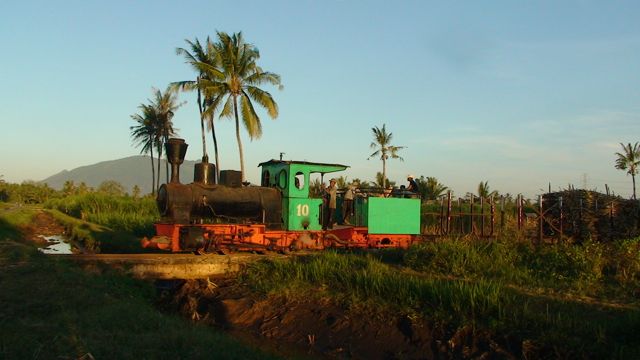
Updated 28 August
| 2 August Gending, Gempolkrep |
3 August Mojopanggung, Merican |
4 August |
5 August Sudhono, Tasikmadu |
6 August Sragi |
7 August |
8 August Jatibarang |
| Main Tour Part 2 |
Main Tour Part 3 |
Future Tours |
2 August 2010 - Gending and Gempolkrep
I saw two buses off to the airport at 6 and then our post tour bus left at 6:30. Leaving Situbondo on an almost clear road, we got a last glimpse of the Wringinanom mill chimney.
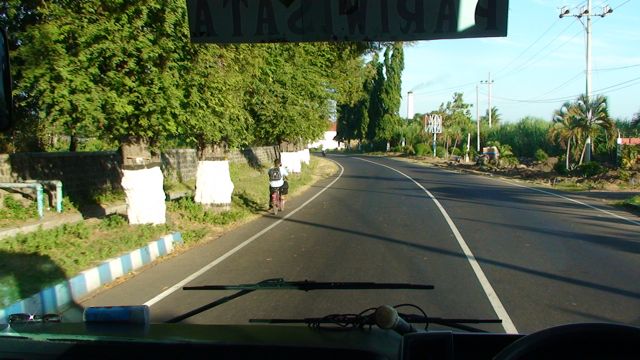
We made good time to Gending where we met Scott and his wife Danielle who had both been to Mt Bromo for the sunrise. Gending was quite sleepy with only 3 diesels in use - on transfers from the truck yard and a field working.

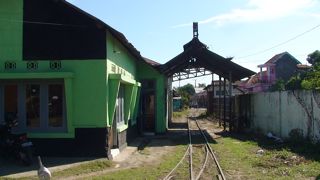
Gending still has two nice structures in the mill yard
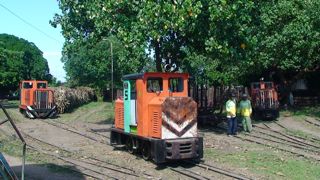
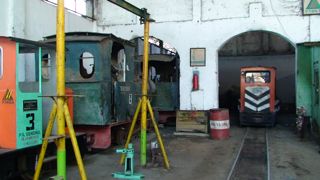
3 locos in the yard and remnants of steam on shed
After driving to Probolinggo for lunch and to collect John (who had also done Bromo) - as well as a couple of Belgians who have been piggy-backing on the trip - at the Rumah Makan Malang we headed off round the mud volcano to Modjokerto. En route we had some nice views of volcanoes.
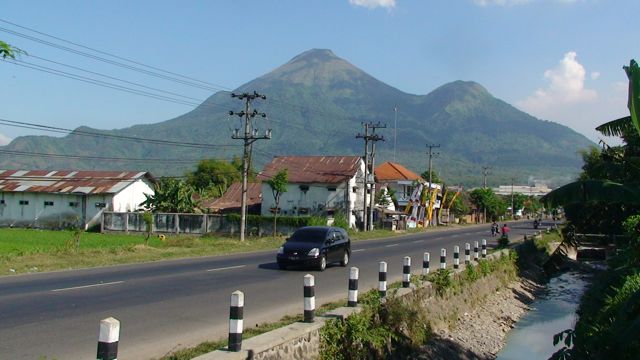
At Mojokerto, we dropped Dave and Hans at the railway station and headed for Gempolkrep mill. When steam was used, this was always a difficult/slow mill to go round even with permission. We arrived just after 4 with a skeleton staff in the office and it wasn't until 4:35 that I persuaded them to take the money and let us look around even though the boss was 'on his way'. He eventually met us at the shed about 15 minutes later somewhat concerned about whether his junior had done the right thing. We had lost the light by 5:15 and left for our '1 hour' drive to Kediri in the dark.
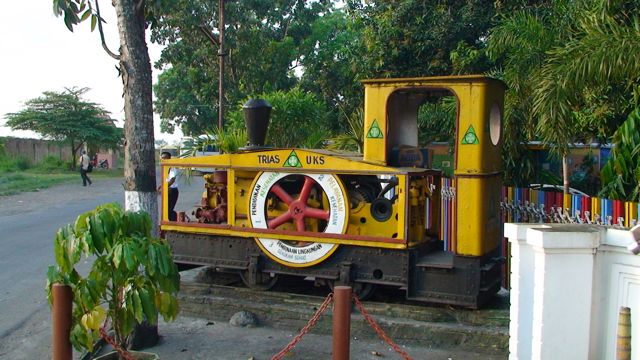
Plinthed is this interesting WWI vintage German diesel
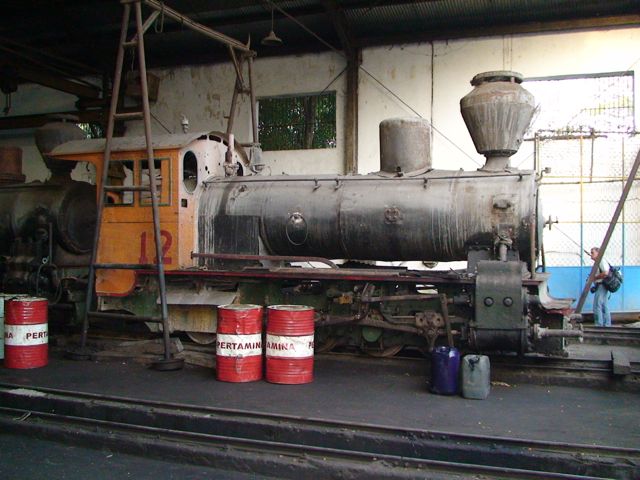
No. 12 last worked towards the end of the 2008 season when steam suddenly finished - the boss tried to explain that steam had finished due to a government directive but I found that hard to believe. Tractors have replaced the big steam locos on the final delivery of cane to the mill. Diesels work the fulls and empties to/from the truck yard.
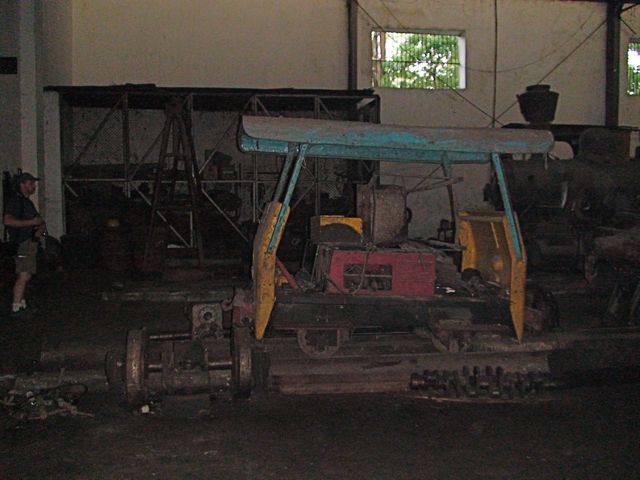
This railcar is left over from days when the mill had field lines
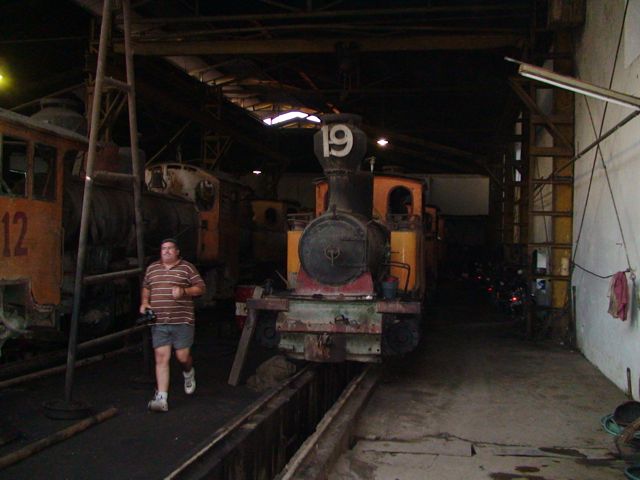
Scott doing a run past past No. 19
We finally reached the hotel in Kediri about 7:30 but receptionist was waiting with rooms allocated and keys ready and I rushed round to the the restaurant to re-assure them we were coming and to order the food. Pork sate was the highlight of the meal plus quite a few Bintangs. It had been a long but ultimately successful day.
3 August 2010 - Mojopanggung and Merican
Our first mill is now a mix of bullock, tractor and diesel. This was the friendliest reception so far (a complete contrast to Gempolkrep) and we were escorted around by the factory engineer, the transport manager and someone from the administration. All had some level of English and were able to chat with the group about their operation. The goal for us to was to see the 2 Baldwins (one steam and one diesel). The diesel was from E.M.Baldwin in Australia (no connection with the more famous US Baldwin Loco Works).
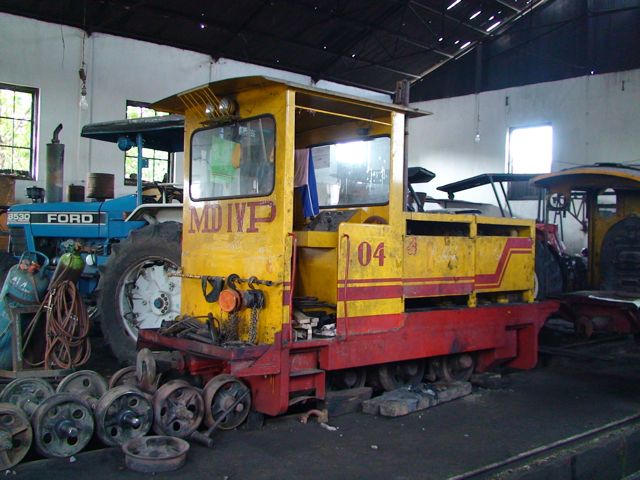
The diesel Baldwin was never a great success and has been disused for some time.
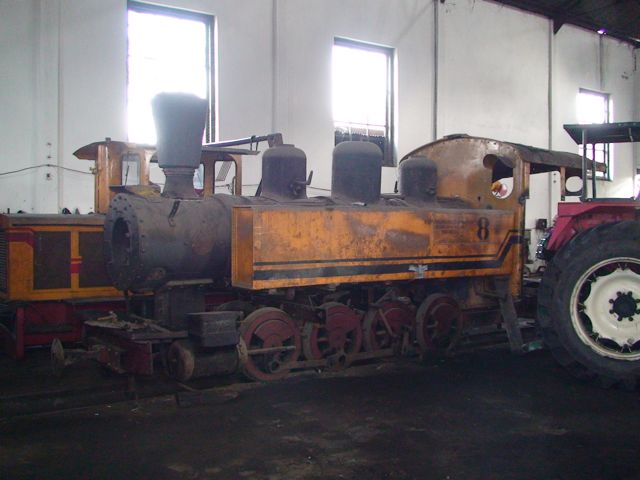
The steam Baldwin certainly worked for more years before retirement.
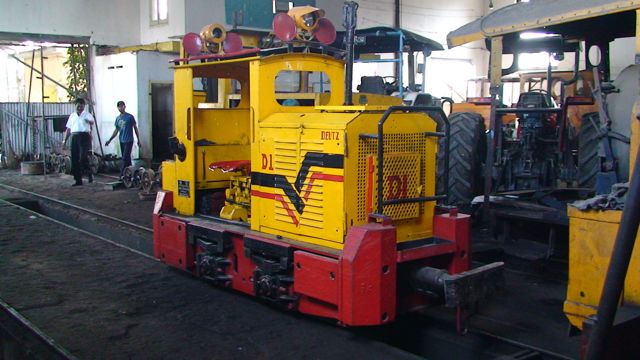
This loco which shares the diesel locos duties would be nice in the back garden.
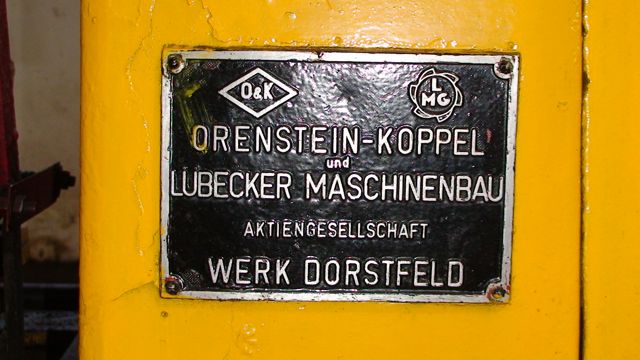
Although it has Deutz painted on the bonnet, the plates are more complicated.
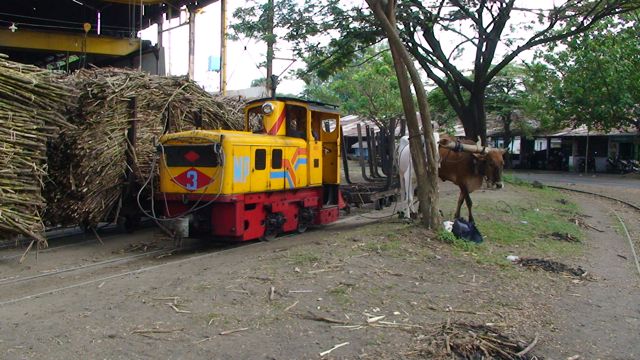
Diesel 3 was pulling cane to the mill using a cable.
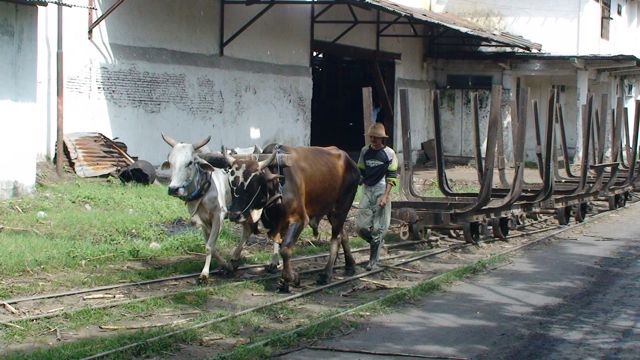
Some duties have reverted to bullock haulage. The teams are hired in for the season.
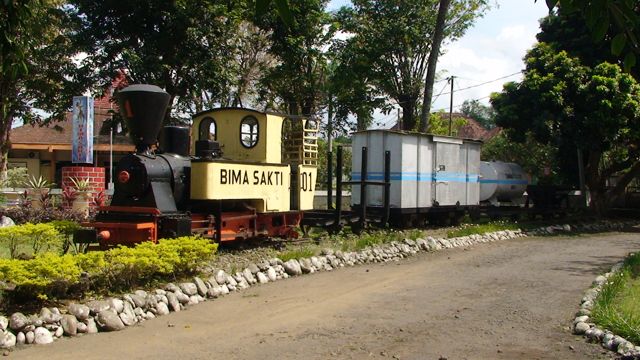
Plinthed near Administration is this train showing 4 types of wagon - cane lori, bagged sugar box car, mollases tanker and a tippler wagon for sludge.
On our way back to Kediri, we saw this Chinese dragon on the wall of a building.

We knew it was a Chinese dragon because it didn't have legs and was more like a sea serpent.
Merican
We returned to Merican by request between 1:30 and 3:30 when the lighting was reckoned to be correct and before the shadows crept into the photos. The mill can now process visitors in about 5 minutes while the bus takes the tour members to the action making this one of the quicker mills to get into. The action was a bit slow but the lighting was good and we saw 2 trains climb the bank while we were there.
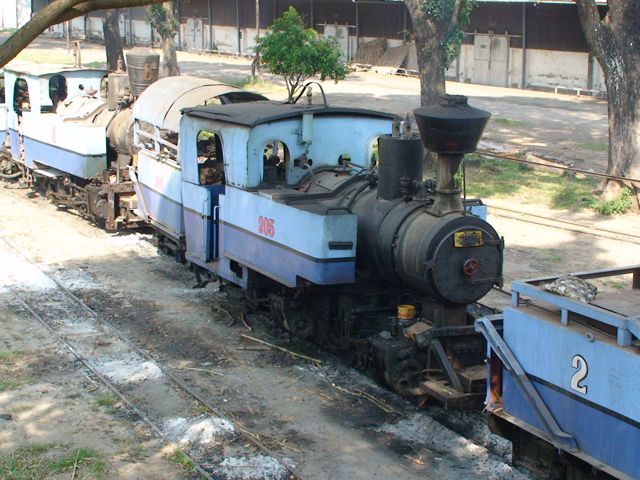
Seen from the steps up the water column, we had a complete line up after shift change.
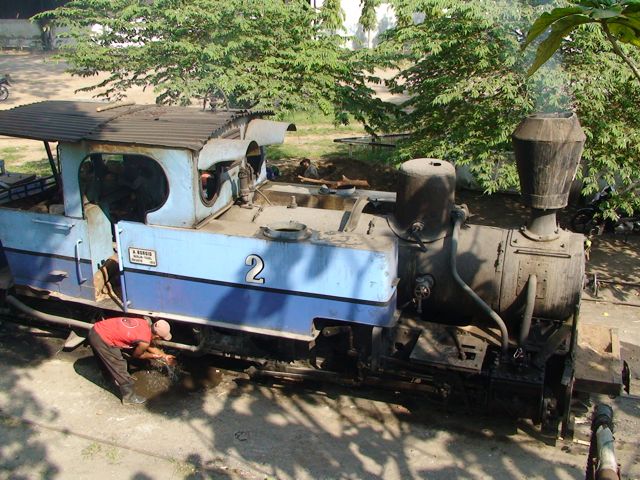
Another view from the water column.
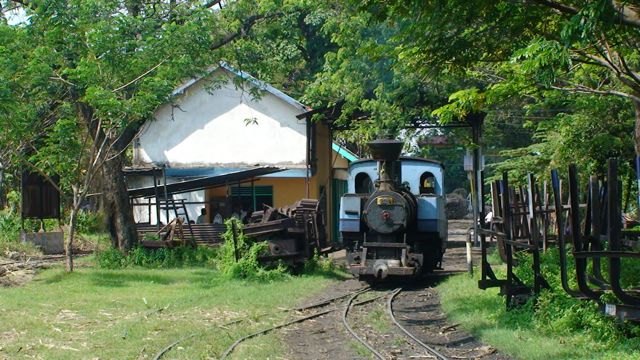
Loco 205 drops down to the truck yard via the weighbridge.
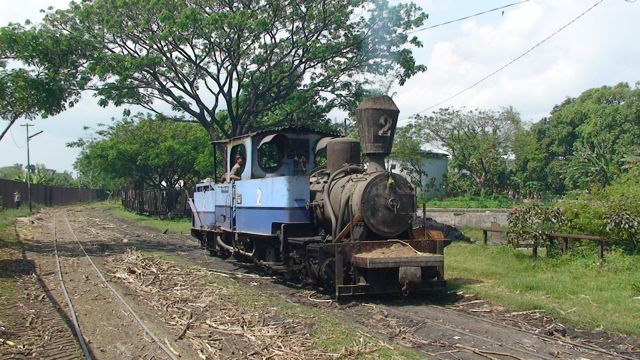
Loco No. 2 drops down the bank from the stabling point.
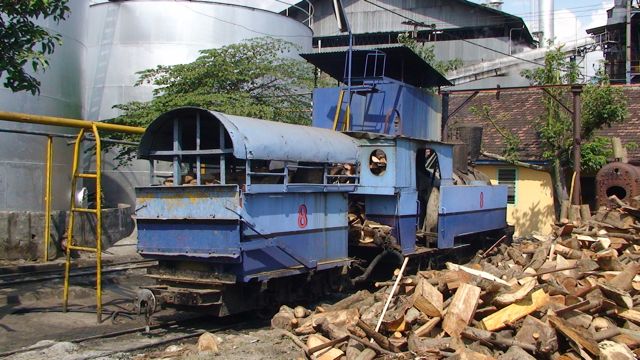
Loco No. 8 on the stabling point near the road crossing.
Only 1 loading gantry was in use in the truck yard and this probably explains the limited activity we saw. Just before shift change, a tractor pushed quite a long train of fulls from the truck yard to the mill costing us a steam turn.
After Merican, we moved on to Madiun where we will be for 2 nights.
4 August 2010 - Purwodadi and Rejoagung
Today was the easy day on the post tour and both the participants and me were able to take it very easy. After a 7 am breakfast we got underway somewhat after 7:30 and drove the short distance to Purwodadi where 5 people elected to look inside the mill as well as at the locos. Only one steam loco was in use with 2 diesels. No. 16 which had been under repair on the main tour was in use while No. 10 and 15 were on shed; No. 10 having repairs made to the left cylinder and No. 15 without its tender. I've been here so many times (this was the first mill I ever visited when I was travelling through Java with my wife in 1980) and we had already visited on the main tour so I only include 3 pictures here.
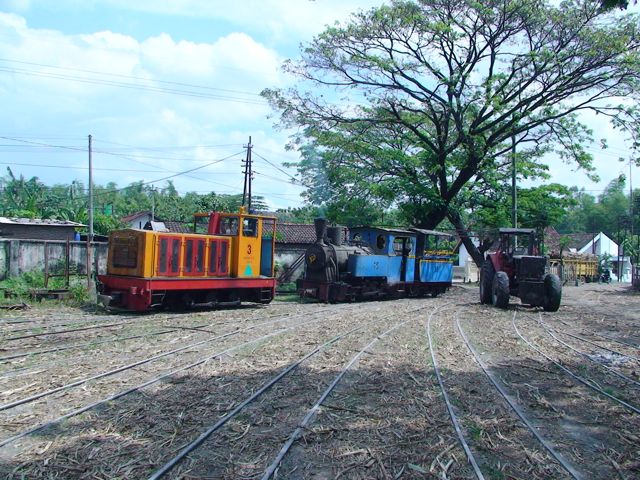
Three forms of motive power in the truck yard.
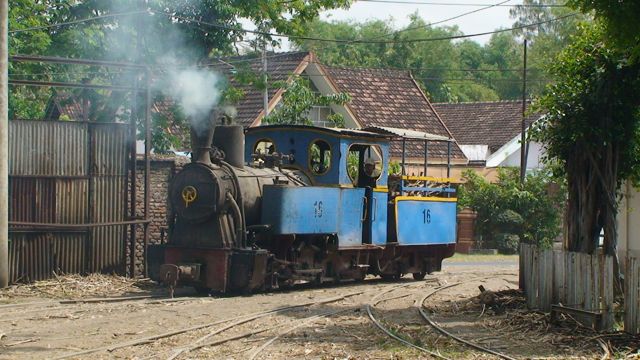
No. 16 has just propelled the diesel and train to the road crossing and is about to drop back for its own train. The diesel will return to assist.
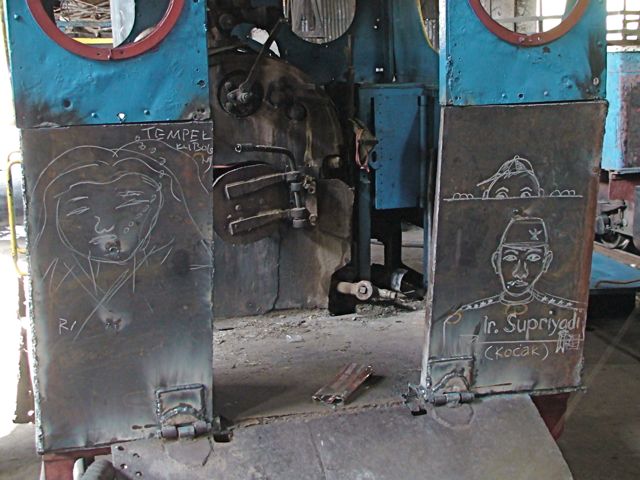
A local graffiti artist has been at work on the cab of No. 15.
Rejoagung
After lunch and a rest, we headed off to Rejoagung at 2:30. This is a private mill so permission must be applied for on the spot. We did OK and were at the old roundhouse just as our first tropical downpoor of the trip arrived.
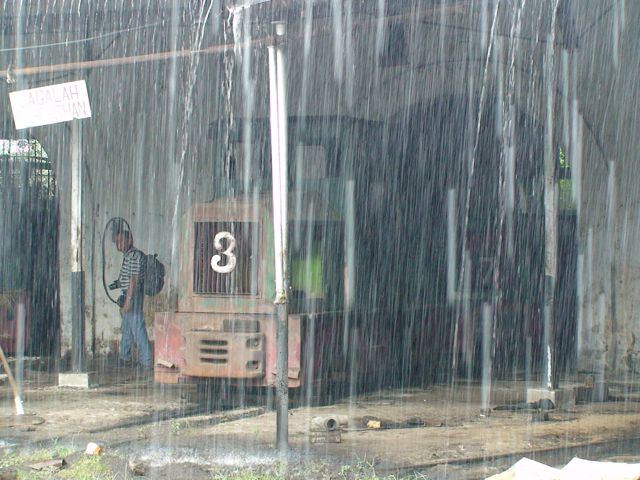
Loco No. 3 on blocks with tour participant Peter.
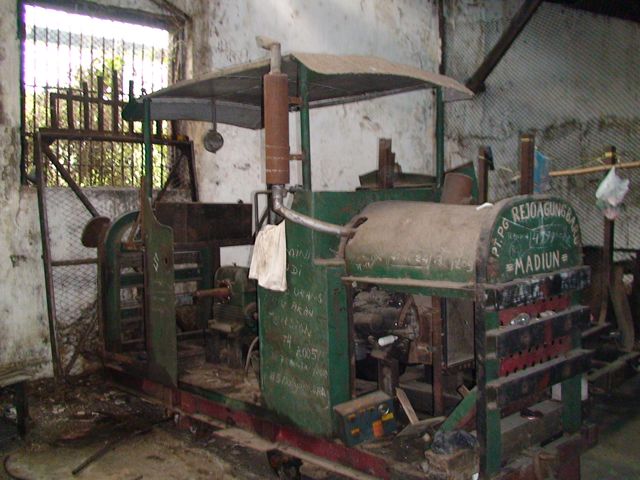
Home-made diesel - I needed a wider angle lens.
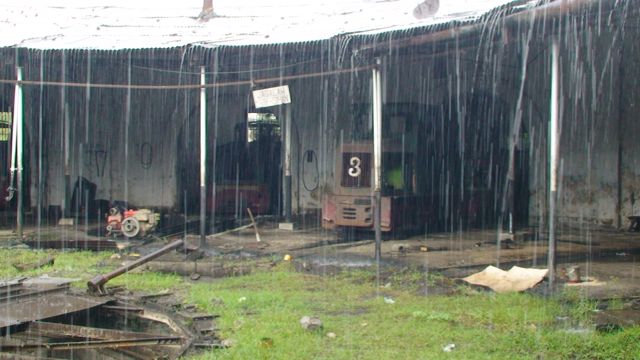
View of the roundhouse in the rain.
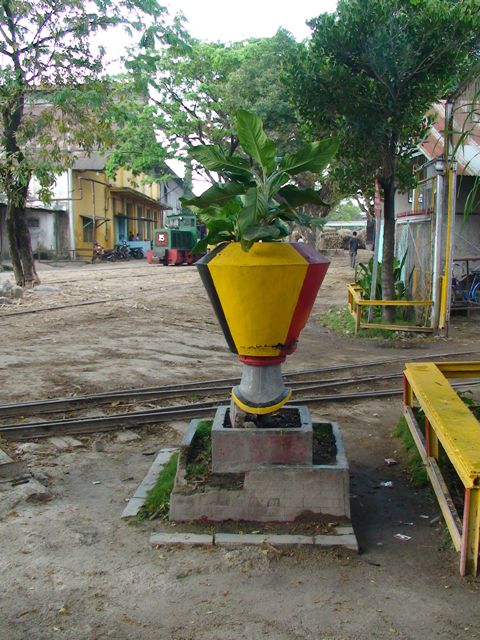
Apart from the roundhouse, one of the few remnants from the steam age at Rejoagung.
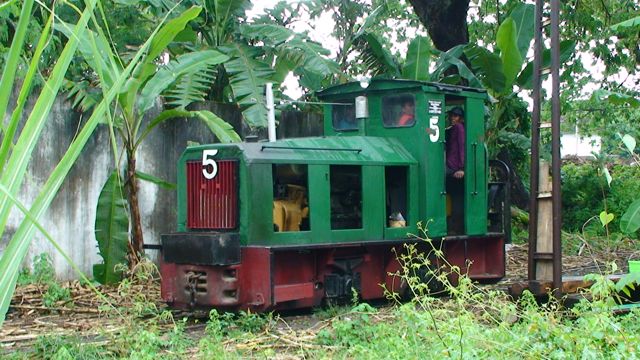
After the rain, we found many small diesels - this Diema was waiting for empties.
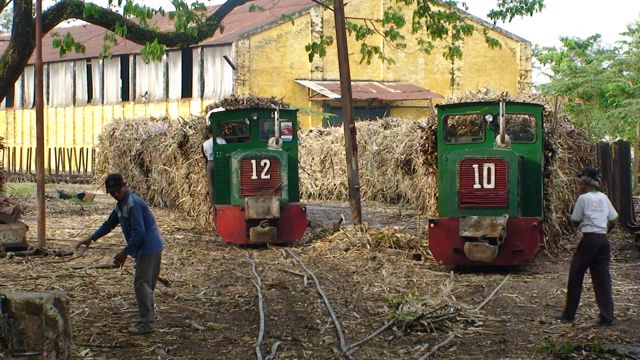
No. 10 and 12 were moving full loads foward and back - we were never quite sure what they were doing with them.
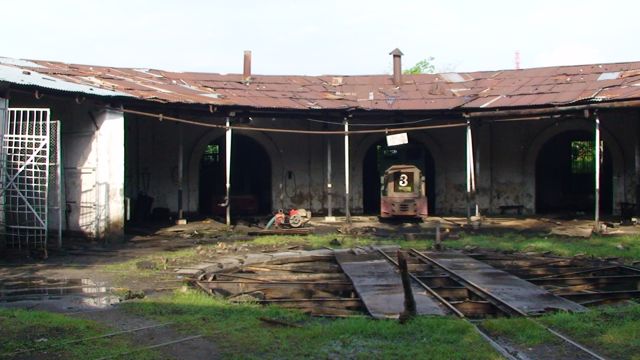
View of the roundhouse after the sun returned.
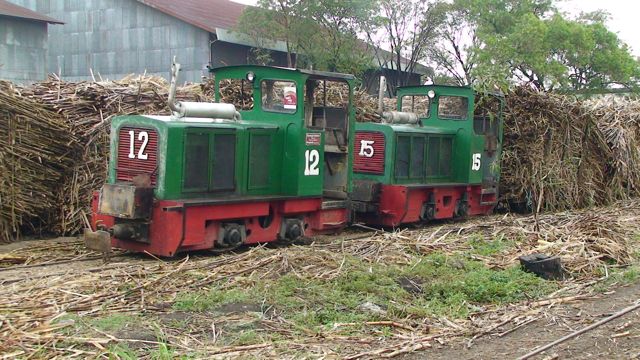
These two locos struggled despite double heading trains after the rain.
Rejoagung is an interesting mill but one that dieselized early. It was all diesel by 1981 but there was a shed full of steam that I could have seen but I ended up watching steam (B50 and D52) shuffle around Madiun station instead. After all this time, I can't be sure if I made the right decision but it was good to finally see the half roundhouse at Rejoagung.
5 August 2010 - Sudhono & Tasik Madu
Steam had been requested here (thanks, TC and Lita) and there it was sitting outside the shed when we arrived just before 8. The staff who had arranged this were in a meeting in Surabaya but the crew were happy to shuffle the loco around initially and then, when the opportunity presented itself, I was able to arrange two trips with cane from the truck yard to the mill yard. They didn't have a lot of wood and any more would have been pushing our luck.
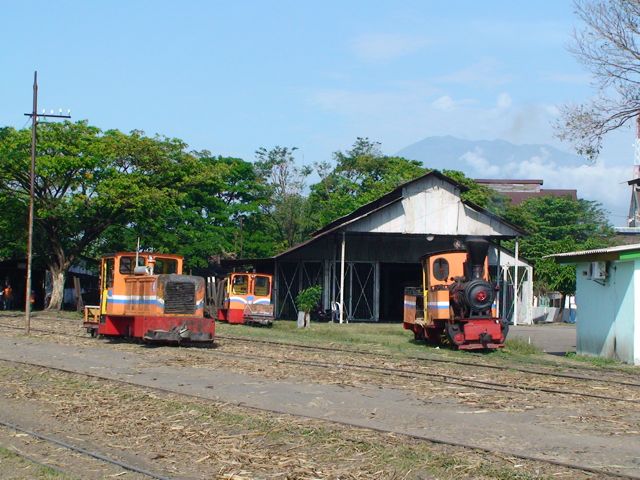
No. 3 outside the shed in steam with a volcano Mt Lawi (5265m) in the background.

No. 3 hauls cane to the mill yard.
While there, I also secured a nice insect shot:
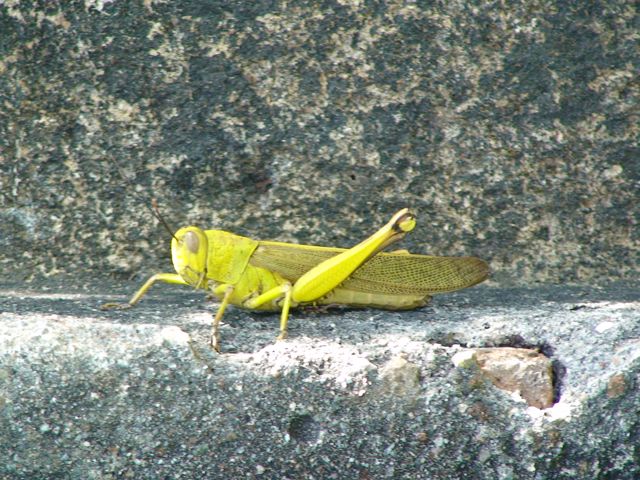
as well as this surreal shot of the condensing ponds
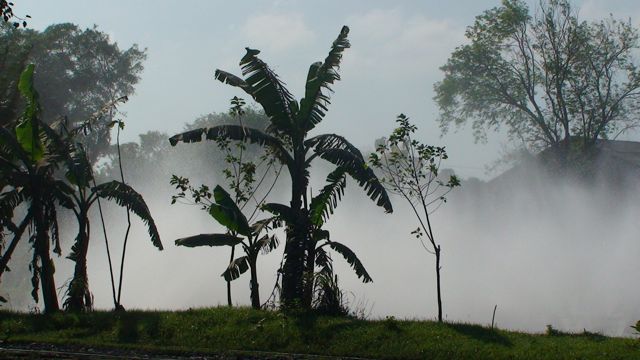
This was a genuine plus for the post tour as we saw only diesels in use during the main tour. We drove towards Solo and found a sate restaurant for lunch.
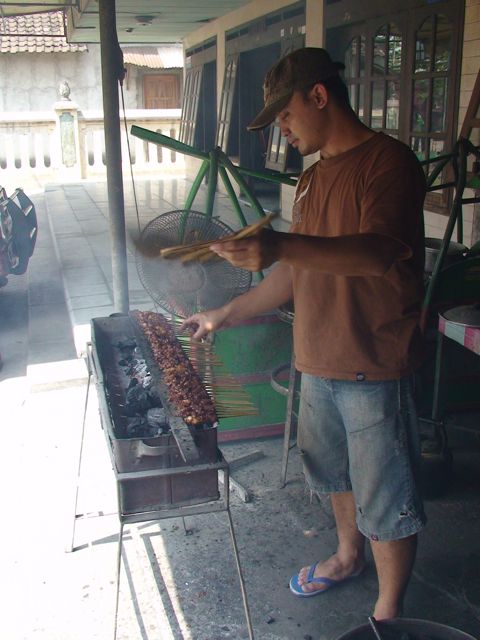
100 sticks of sate coming right up!
Tasik Madu
We approached Tasik Madu to a disappointment. We had been hoping that the far truck yard would be in use but it wasn't. However, No. 6 was in steam and working and that cheered everyone up. It didn't have a lot to do from the near truck yard but made a number of runs during the afternoon.
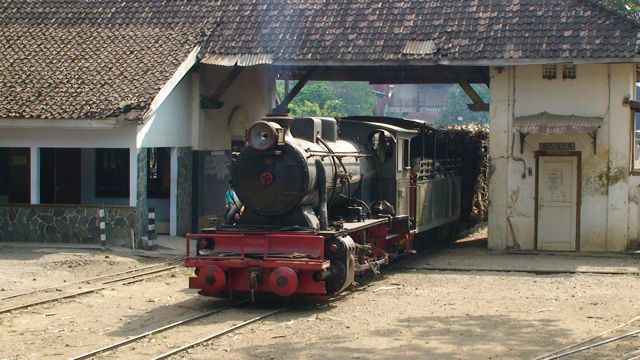
Although some bagasse was being delivered to the loco depot this afternoon, No. 6 is still burning wood.
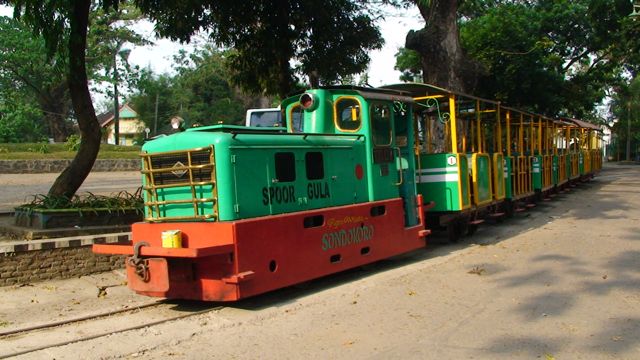
We got 5 people together including the bus crew and rode the tourist train. This is one of the best examples I have seen on any railway in Java of getting your local tourism offering right. Crewed and waiting for customers. Rp5,000 (around 40p) for a decent ride around the mill complex. I can imagine that it is heaving at the weekend.
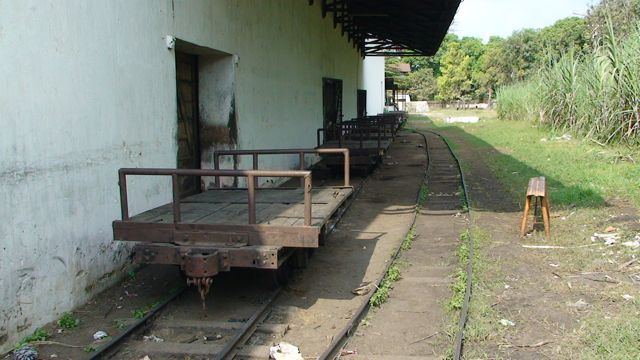
I explored the bagged sugar tracks and found these wagons with evidence of bullock haulage but no action.
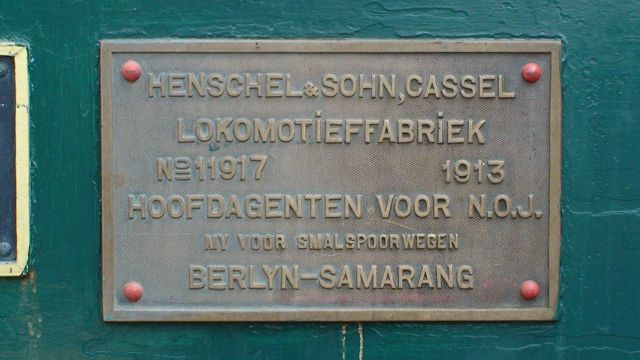
Steam loco No. 7 has an interesting Dutch plate.
After that we headed for Solo to our hotel for one night.
Today was primarily a transfer day and given the slow journey in the other direction from Tegal to Ambarawa on the main tour, we were expecting a long day. The journey to just beyond Pekalongan where we had lunch was smooth but at an average of 30 kph hardly fast by world standards. We arrived at Sragi just after 1 and were able to have a good 2.5 hours there. The mill wasn't milling cane and there were several derailments to slow things down and not many cane trucks arriving (probably because it was Friday afternoon and everyone was off to the mosque) but we saw a good few movements in the time and I had a hair cut and beard trim.
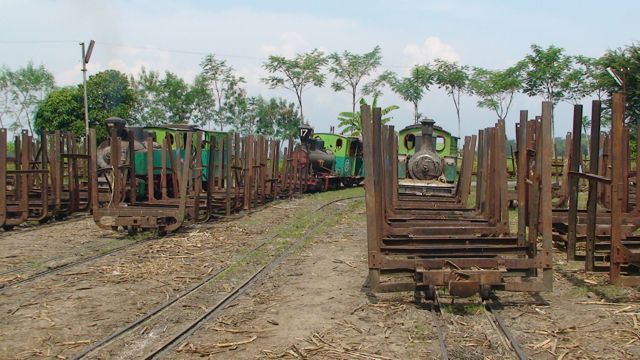
Plenty of locos sitting around with not much to do.
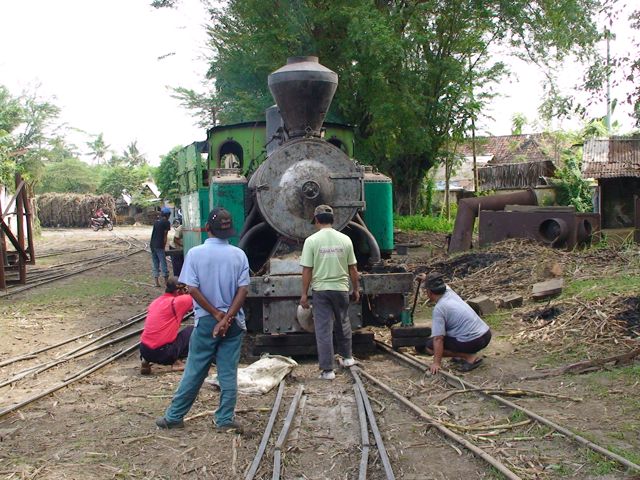
Some being re-railed.
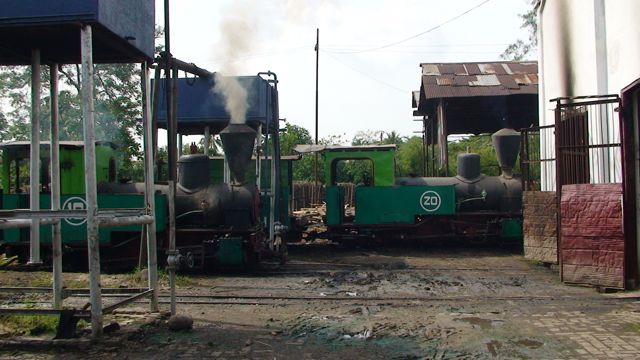
Others on shed that didn't move during the afternoon.
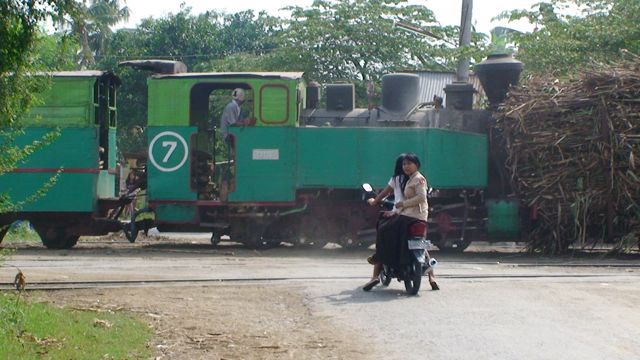
We did see some action.
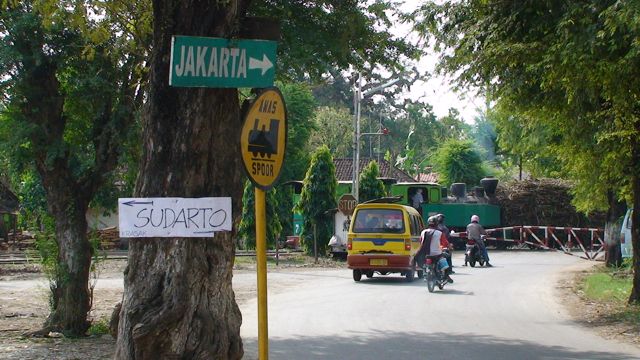
This photo was requested by Mark who was on the main tour - he saw this shot (and didn't get it).
The final section to Tegal was typical of the road transport problem that Java now has. We left at 4 to do the 30 km to Tegal, which even by our slow Indonesian speeds should have been done in an hour. We arrived at the hotel just after 6 having travelled at the average speed of something under 15 kph! Quite a lot of that was down to waiting 20 minutes while police and other 'special' cars were given priority on a road which was being resurfaced and which was subject to a contraflow. If anyone is looking for reasons not to come or not to come to Java again, this is one of the biggest.
An excellent and inexpensive meal tonight at the Chinese restaurant R.M. Dewi near the station. The birthday party next to us were demonstrating that the Chinese are the number one contenders for the noisiest people on the planet.
7 August 2010 - Sumberharjo & Pangkah
Today was the last full day of the trip and we revisited 2 of the best mills on Java for steam locos. Sumberharjo lived up to its sleepy 'Slumberharjo' image today and we saw few loco movements and almost no train movements before we had to leave at 10:30. Perhaps it was because it was a Saturday.
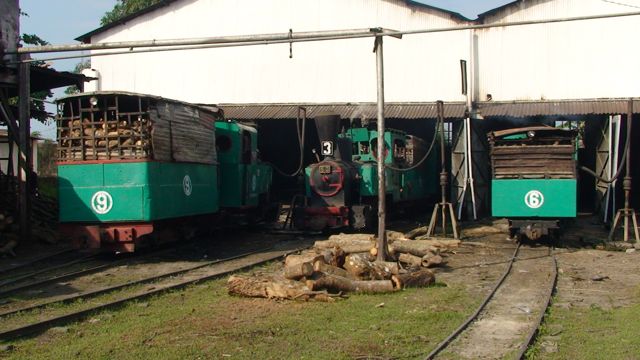
The shed in the early morning is always attractive but most locos face inwards.
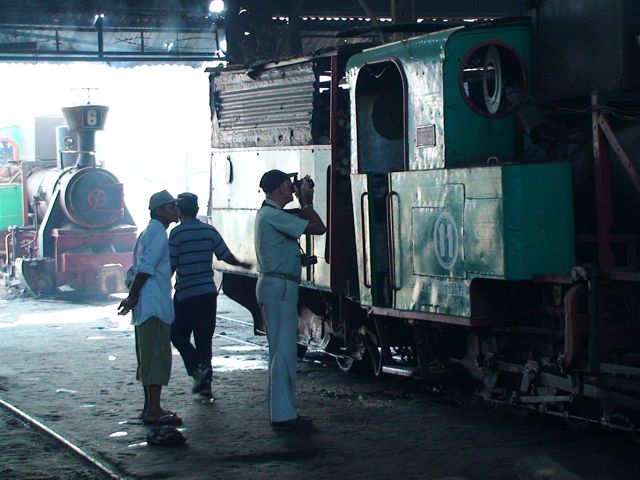
Inside Bob gets up close and personal with a Ducroo & Braun builder's plate.
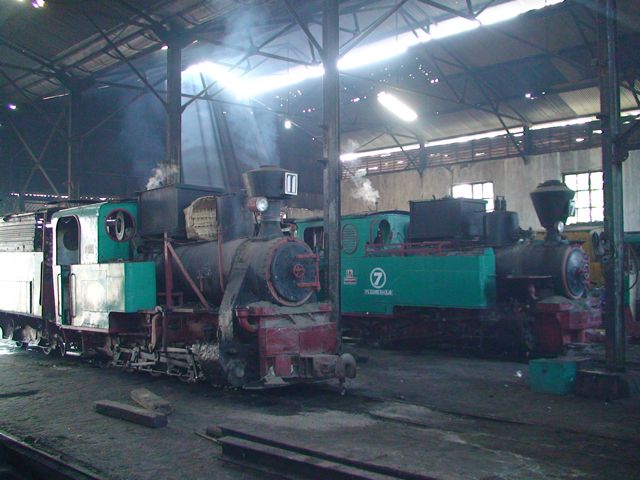
Here we see No. 7 & No. 11 getting ready for field work.
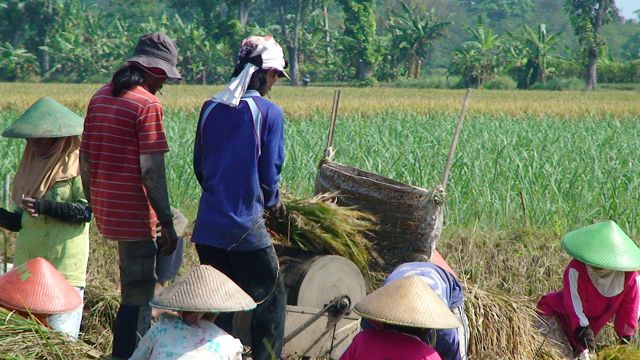
Near the weighbridge, rice was being harvested and the grain being removed from the stalks with a pedal power machine.
Pangkah
Due to the lack of action at Sumberharjo, we were at Pangkah early and saw the last few workings of the morning shift before the 2-2:30 shift change. We also saw a wonderful line-up on shed at shift change. And I can swear that this was not arranged.
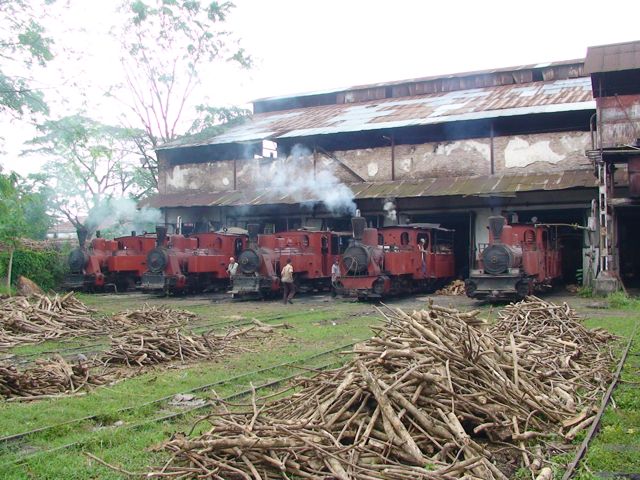
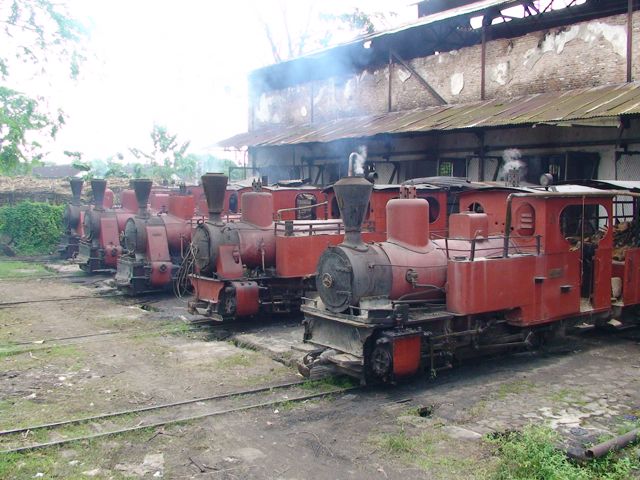

Not a bad way to end the post tour.
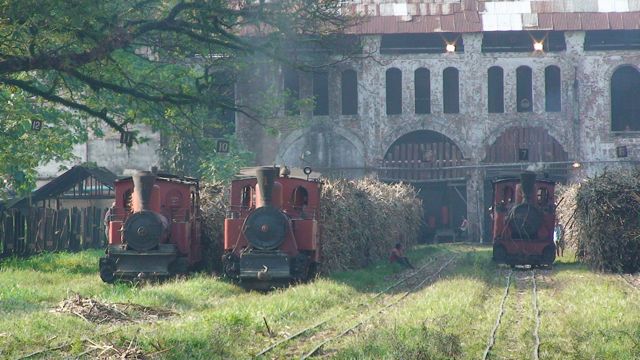
Around 4 pm, we also had 3 locos close to the mill train. The two locos on the left (No. 1 & No. 9) have pushed back their loads and on the right No. 10 is using a cable to work cane closer to the mill train. The other two locos on shed at shift change were not in use today.
Tomorrow, we will make a brief stop at Jatibarang on our way to Jakarta. We are not expecting to find working steam there and I am not expecting to find free wi-fi at the Hotel Batavia unless they can be persuaded to give the tour leader another two hours free. The final day of the blog will probably be uploaded on the way back to England or when I am back in Nottingham.
Jatibarang has stopped using steam locos but still has loco No. 5 available for tourist charters. We also saw the children's railway they have constructed across the road from the mill around an old Dutch house. The half round house here is a classic but not easy to photograph now that trees are growing up.
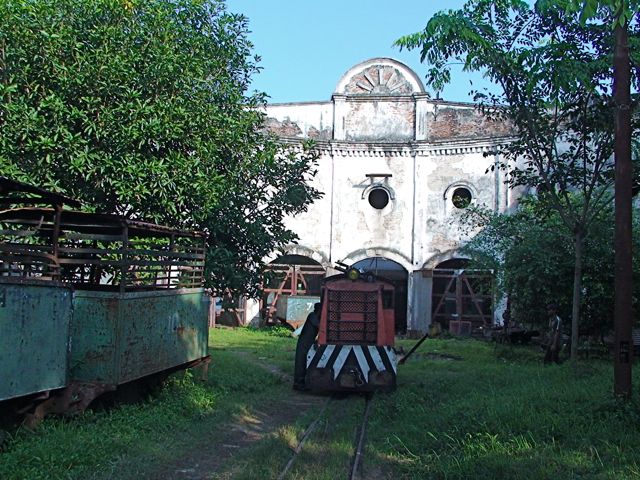
The loco in front of the shed was receiving attention,
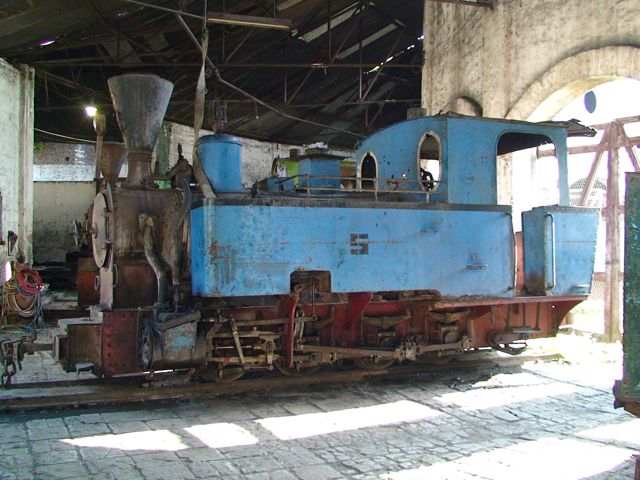
Jung No. 5 is the workable loco.
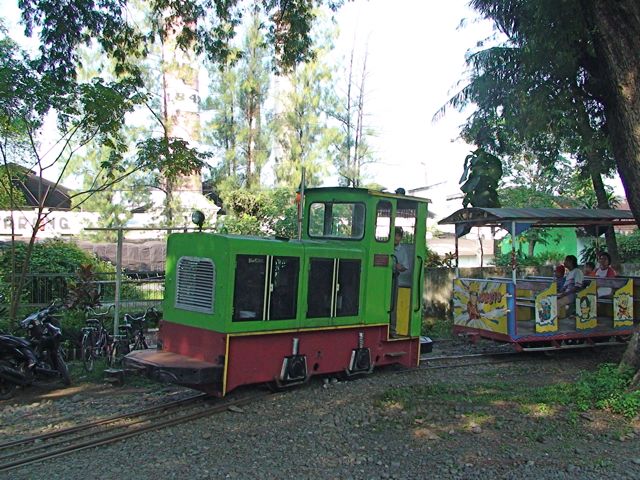
This Schoema was formerly loco E on the mill roster and is now on the children's train.
Following our early visit, we were away by 8:40 and with several stops, we reached Jakarta around 4. The 7 hours it took was pretty much as I had predicted and it was nice to arrive early to finish the trip. TC turned up at the Batavia hotel for final business. I locked myself in the bathroom in the room and couldn't get out without a key which we didn't have. Luckily TC and Kelvin were both there to comfort me - Kelvin passed me Steam Railway under the door and TC went looking for the man with the key. This would have been a very unpleasant experience if I wasn't sharing a room! So far, there has been no apology from the hotel and I doubt they will consider it necessary. I vote not to go back to the Batavia if we ever do this again!
Was the post tour a success? I'd like to think so. We achieved steam at Sudhono and were able to revisit all the steam mills and see a few diesel mills. The only really negative aspect for me was the long additional hours on the bus as we cruised at 30 kph or crawled at 15 kph back to Jakarta.
John Browning one of our Australian participants will be blogging the post tour as well. See: http://trainrover.blogspot.com/
You can see my 2008 Java blog here.
